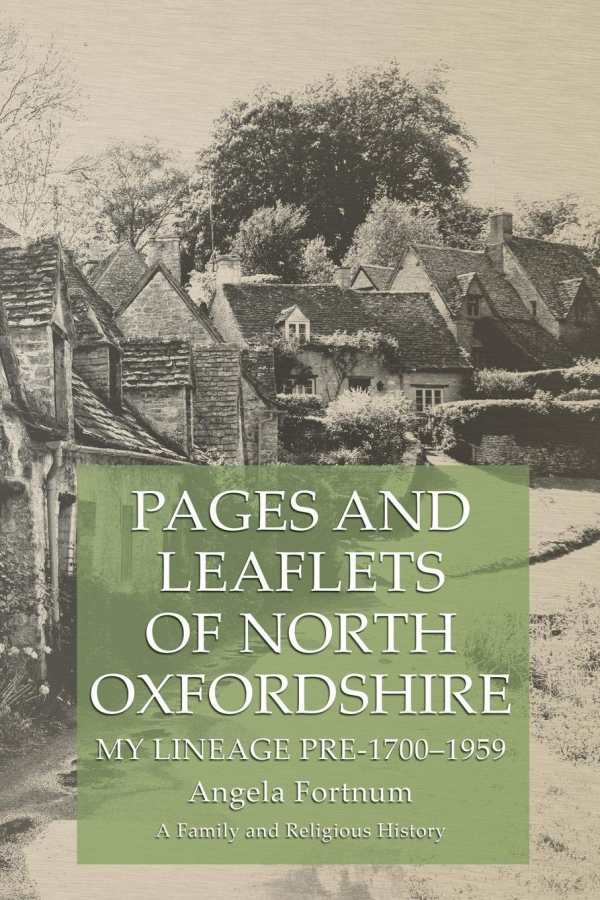Pages and Leaflets of North Oxfordshire
My Lineage Pre-1700–1959
An admirable amateur genealogical survey, Pages and Leaflets of North Oxfordshire illustrates the historical record with personal details.
Angela Fortnum’s Pages and Leaflets of North Oxfordshire is a personal family and religious history, following Fortnum’s British ancestors from before 1700 to 1959.
As an amateur genealogist tracing her lineage, Fortnum succeeded in getting back to her seven-times-great-grandfather and discovered, “There was a story to tell, not only about the social history but also about the changing religious beliefs and the historic buildings linked to these.” In this, her first foray into expanding her personal genealogical work into an accompanying religious and social history, Fortnum moves through and expands on the archival record, adding interest, conjectures, and informative connections along the way.
Fortnum’s direct ancestors came from Milcombe and South Newington, two villages in North Oxfordshire, England. Beginning with a small group of Quakers in the 1660s, her family entered the Church of England in the 1700s, suggesting conversion. A century later, the family was still devout but invested in various branches of the Methodist church. Always laborers, the family worked from their home, beginning with the cottage industry of weaving and moving into baking, milling, and farming until the early 1900s, when the last of the family land was sold for housing developments. Both Fortnum and her parents worked in industries outside the home.
Fortnum’s research is illustrated with excellent images of the historic churches connected to her ancestors’ lives, highly legible images of original historical documents like censuses, and a few family photographs and portraits from a private collection. For archival documents, Fortnum always includes a transcript, resolving some of the difficulty with reading original scripts and archaic spellings. Most useful are images of the originals—a way to compare and verify the transcripts against their source documents.
Fortnum’s family lore, oral histories, and educated conjectures make history come alive. As left-handedness runs in her family, she posits early left-handed writers might not have been able to sign their names on official documents without dragging hands and smudging ink. Oral histories, as of her great-aunt’s death in a riding accident, are also incorporated to flesh out the historical record, preserving stories for future generations.
The book’s end material is as useful as its main content. A thorough list of abbreviations makes clear the often impenetrable lexicon of genealogical and legal documents. A mix of scholarly and lay sources, the bibliography’s amalgam is typical in amateur genealogical research, and, therefore, more helpful for the intended audience. The bibliography is meticulous, giving clear and complete reference information for both online and physical sources, so facts can be accessed and interpolated easily by others with consanguinity. Lastly, the index provides an easy, comprehensive page reference to every place and personage in the book.
An admirable amateur survey of the interconnection of family lineage, religion, and commerce, Pages and Leaflets of North Oxfordshire presents archival information and family history in ways that illustrate the historical record, drawing out the effects on living arrangements, family configurations, and geographic and social mobility.
Reviewed by
Letitia Montgomery-Rodgers
Disclosure: This article is not an endorsement, but a review. The publisher of this book provided free copies of the book and paid a small fee to have their book reviewed by a professional reviewer. Foreword Reviews and Clarion Reviews make no guarantee that the publisher will receive a positive review. Foreword Magazine, Inc. is disclosing this in accordance with the Federal Trade Commission’s 16 CFR, Part 255.

